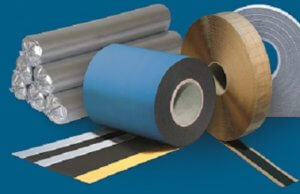 Andy Swift, national sales manager for ISO-CHEMIE, considers the effective sealing of building façades, which can prove to be difficult if failure, particularly in the form of water leakage, is to be avoided…
Andy Swift, national sales manager for ISO-CHEMIE, considers the effective sealing of building façades, which can prove to be difficult if failure, particularly in the form of water leakage, is to be avoided…
While a building façade should offer some degree of eye-catching appeal, its main purpose is to provide weather protection, and a safe and comfortable interior. If this is to be achieved and long-term performance and durability assured, the materials used in their construction need to be carefully designed, planned and installed.
Facades can come in all shapes and sizes ranging from heavy forms of construction through to brickwork and precast concrete to lighter structures such as profiled metal sheet, stick curtain walling, aluminium and glass screens. Final specification will have been decided by the client and the architect based on the purpose of the building, the image required, the design life of the building and whole life costs including energy and maintenance costs.
One of the biggest onsite issues installers can face is how to effectively seal the façade. It doesn’t matter how much effort has been spent designing and developing the perfect joint and gasket if it’s then undone by an incorrect installation by an untrained workforce that has little appreciation of the performance requirements of a sealed joint.
And here the choice of sealant can be critical, requiring careful consideration and examination to achieve optimum levels of long-term sustainability and performance.
Sealants, which must adhere strongly to the materials they connect, must also be durable and possess the requisite resistance qualities if they are to protect effectively against the elements. They must also offer compliance with acoustic and insulation regulations and accommodate movement joints – they need to offer flexibility without compromise while ensuring adjacent materials do not come under stress.
The mantra of ‘fit tight, ventilate right’ should be adhered to. An air-tight building with controllable ventilation is the ideal design. The construction of commercial buildings must be tested for air-tightness in much the same way as domestic buildings: any air leaks after a failure can be tested using smoke pencils, which will draw smoke from the building and identify remedial works to conform to standards. Sometimes, these failures are through lack of design input and at other times, due to contractors not adhering to designs – usually due to a lack of understanding of the purpose of the specified products.
Many sealants are likely to have a shorter useful life than the life span of the building unless they are protected and some provision should be made for replacing the sealants within the joints, or over sealing. Although a significant proportion of sealants that are used in façade construction today are ‘wet’ applied materials based on synthetic polymers, which cure to form flexible solids, they do have their drawbacks: mastics will harden with time, rendering them particularly unsuitable for use in large scale industrial or commercial façade systems.
So, as an alternative to these ‘wet’ solutions, the building and construction sector is seeing the emergence of foam-based sealing strips and tapes. These products consist of flexible materials, which are pre-formed in a range of sizes and sections and mainly rely on compression, and can be used to improve the long term sealing of façade finishes for curtain walling, pre-cast or in-situ concrete, brick and block work and composite or cassette-style metal panels.
The ISO-CHEMIE ISO3 Façade Sealing system protects the expansion/movement joints as well as the junctions between different materials used in façade construction against the extremes of hot and cold and wet and dry weather together with the physical stresses caused by building movement. It can also be used to supply the relevant level of air tightness required by the current and proposed changes to the UK Building Regulations.
The system complies with regulatory requirements relating to the different types of facades including conformity to EnEV regulations. It also complies with guidelines laid down by the industrial association for metal building constructions (IFBS) for joint tightness on lightweight steel constructions.
Passivhaus award winning systems BLOCO-One and Winframer Type 1 are a good solution to fixing windows to facades when the external wall is not fitted, creating an air-tight, structural and thermally efficient frame to install windows. BLOCO-One also allows the window to be installed as a ‘3 in 1’ solution to the usual system of expanding tape weather seal, spray foam insulation and EPDM internal airtight layer-this saves time on installation and out performs the previous method.
New advanced foils to replace EPDM are available. The VARIO SD/XD range now come complete with a full adhesive side which can be installed down to minus 10 degrees C, when regular sealants will have frozen and work halted. These foils keep vapour from entering the joint from the inside, but allow the joint to breathe from within and reduce moisture forming, causing fabric damage.
The system comes with a 10-year warranty and complies with the relevant UK Building Regulations, as well as DIN EN standards, covering thermal conductivity, dimension tolerance, impermeamability to driving rain on joints among others.
ISO-CHEMIE is one of Europe’s main producers of impregnated foam sealants, specialising in the manufacturer of foam products from polyethylene (EPE), polypropylene (EPP) and polyurethane (PUR) using the latest production techniques. The company’s UK technical and distribution operation is supported by a dedicated logistics service to ensure customer orders are completed as quickly and efficiently as possible (usually next-day delivery). Four technical field advisors are on hand regionally to help designers and installers.

